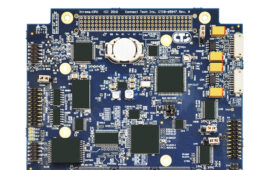Unraveling the Science Behind Strong Magnets
Strong magnets have fascinated scientists and researchers for centuries. These magnetic powerhouses are not only capable of holding up refrigerator magnets, but they also possess incredible properties that have revolutionized various industries and technologies. To understand the true potential of strong magnets, it is important to dive into the science behind their strength and magnetic fields.
The Magic of Magnetic Fields
Magnetic fields are invisible forces that surround magnets and affect other objects within their range. These fields are created by the movement of electrons within the atoms of magnetic materials, such as iron, nickel, and cobalt.
The strength of a magnetic field is determined by the density of the field lines, which indicates the intensity of the magnet’s force. The more field lines there are, the stronger the magnetic field. This is what allows magnets to attract or repel other magnetic objects, depending on their orientation.
Magnetic fields are also responsible for inducing an electric current in conductive materials, a phenomenon known as electromagnetic induction. This principle is the foundation for many modern technologies, including electric generators and transformers.
Understanding Magnetism: Types and Properties
There are several types of magnets, each with its own unique properties and applications. Permanent magnets, such as neodymium magnets, retain their magnetism even in the absence of an external magnetic field. On the other hand, electromagnets, as the name suggests, only exhibit magnetic properties when an electric current is applied.
Neodymium magnets, often referred to as rare-earth magnets, are the strongest type of permanent magnets available. They are composed of a combination of neodymium, iron, and boron, which results in a high magnetic field strength. These magnets are commonly used in various industries and technologies, from headphones and speakers to motors and magnetic levitation systems.
Other types of permanent magnets include ceramic magnets, alnico magnets, and samarium cobalt magnets. Each of these magnets has its own set of properties and strengths, making them suitable for specific applications.
The Quantum Mechanics of Powerful Magnets
To truly understand the power of strong magnets, one must delve into the world of quantum mechanics. At the atomic level, magnets operate based on the alignment of electron spins.
In quantum mechanics, electrons can be thought of as tiny magnets themselves, with a property called spin. This spin can either align with or oppose an external magnetic field, resulting in a net magnetic dipole. When a material contains a large number of atoms with aligned electron spins, it exhibits a macroscopic magnetic behavior.
The phenomenon of electron spins aligning with an external magnetic field is known as paramagnetism, while the opposite behavior is called diamagnetism. Strong magnets, such as neodymium magnets, exhibit paramagnetic behavior due to the alignment of the spins of their constituent atoms.
Quantum mechanics also explains the phenomenon of magnetic hysteresis, which is the resistance of a material to changes in its magnetization. This property is crucial for the stability and long-term performance of strong magnets, as it allows them to maintain their magnetic properties over time.
Applications and Industries of Strong Magnets
The use of strong magnets extends far beyond the realm of refrigerator decorations. These powerful tools have found their place in a wide range of industries and applications, driving innovation and enabling groundbreaking technologies.
Magnets in Renewable Energy: A Sustainable Future
Renewable energy sources, such as wind and solar power, play a crucial role in reducing our reliance on fossil fuels. Strong magnets are integral components in the generators used in wind turbines and solar panels.
In wind turbines, powerful magnets are utilized in the permanent magnet synchronous generators (PMSG) to convert the kinetic energy of the wind into electrical energy. The strong magnetic fields generated by the magnets enable efficient power generation, contributing to the growth of clean energy.
Solar panels also rely on magnets in the form of photovoltaic cells. These cells convert sunlight into electricity through the photovoltaic effect, which is made possible by the use of semiconducting materials and magnetic fields.
Medical Marvels: Magnets in Healthcare
Magnets play a significant role in the field of healthcare, contributing to diagnostic imaging, drug delivery systems, and even pain management.
Magnetic resonance imaging (MRI) is one of the most essential tools in modern healthcare. It uses strong magnets and radio waves to create detailed images of the body’s internal structures. MRI scans are invaluable in diagnosing conditions ranging from tumors and neurological disorders to cardiovascular diseases.
Another application of magnets in healthcare is in drug delivery systems. By utilizing magnetically responsive nanoparticles, researchers can target specific areas of the body and deliver medication with enhanced precision. This technology holds great potential for treating diseases such as cancer, where targeted drug delivery is critical.
Additionally, magnets are used in transcranial magnetic stimulation (TMS) devices, which are used to treat various mental health conditions, including depression and anxiety. TMS works by generating magnetic fields that stimulate specific areas of the brain, leading to positive therapeutic effects.
Innovative Solutions: Magnets in Engineering and Manufacturing
The engineering and manufacturing industries rely heavily on the power of strong magnets to improve efficiency, enhance product performance, and enable new technologies.
Magnetic separators are commonly used in manufacturing processes to remove unwanted ferrous contaminants from materials. These separators use powerful magnets to attract and separate metallic particles, ensuring the quality and purity of the final product.
Electromagnets are crucial in industries such as automotive and robotics. They are used in a variety of applications, including lifting and moving heavy objects, controlling valves and switches, and creating linear and rotational motion.
Magnetic levitation (maglev) systems are also a notable innovation made possible by strong magnets. Maglev trains, for example, use powerful magnets to lift and propel the train above the tracks, eliminating friction and allowing for high-speed transportation.
Exploring the Benefits of Strong Magnets
The power and versatility of strong magnets offer numerous benefits across various industries and technologies. From enhancing efficiency to enabling eco-friendly solutions, these magnets have the potential to transform the way we live and work.
Enhancing Efficiency through Magnetic Levitation
Magnetic levitation, or maglev, has the potential to revolutionize transportation and logistics. By utilizing the principles of magnetic repulsion and attraction, maglev systems can achieve high speeds and reduce energy consumption compared to traditional wheeled transportation.
The lack of physical contact between the maglev train and the track reduces wear and tear, resulting in lower maintenance costs. Additionally, the absence of friction allows for smoother rides and faster acceleration, offering a more efficient and comfortable travel experience.
Maglev technology is not limited to trains; it also holds promise for various applications, including magnetic levitation transportation systems for urban commuting and the development of magnetic bearings for industrial machinery.
Revolutionizing Transportation with Magnetic Propulsion
Magnetic propulsion systems have the potential to revolutionize transportation by offering a cleaner and more efficient alternative to traditional combustion engines.
Magnetic propulsion works by utilizing the repulsive forces between magnets to create movement. By placing magnets in a specific arrangement, known as a Halbach array, the propulsive force can be increased significantly.
Research into magnetic propulsion systems is ongoing, with potential applications including magnetic levitation trains, magnetic thrusters for spacecraft, and even the development of futuristic flying vehicles.
The Eco-Friendly Advantage of Magnetic Energy
One of the most significant benefits of strong magnets is their contribution to eco-friendly energy solutions. By enabling renewable energy generation, reducing energy consumption, and enhancing efficiency, magnets play a crucial role in creating a sustainable future.
Renewable energy sources, such as wind and solar power, rely on the power of magnets to transform natural forces into electricity. The use of renewable energy helps reduce greenhouse gas emissions and combat climate change.
Magnet-powered technologies, such as magnetic levitation and magnetic propulsion, also offer potential solutions for greener transportation. By reducing the reliance on fossil fuels and minimizing environmental impacts, magnetic energy solutions contribute to a cleaner and more sustainable planet.
Choosing the Right Strong Magnets for Sale
With a wide variety of strong magnets for sale available in the market, it is essential to choose the right magnet for your specific project or application. Understanding the factors that determine magnet strength and selecting the appropriate magnet grade, shape, and size can optimize performance and ensure successful outcomes.
Understand Your Needs: Determining the Strength of Magnet
Before purchasing a strong magnet, it is important to evaluate your specific requirements. Consider the purpose and application of the magnet to determine the required strength.
Various factors, such as the distance between the magnet and the object it needs to attract or repel, the weight or force it needs to exert, and the specific environmental conditions it will encounter, influence the required magnet strength. Consulting with experts or conducting thorough research can help identify the appropriate magnet strength for your needs.
Demystifying Magnet Grades: Which is Suitable for Your Project?
When it comes to strong magnets, different grades indicate variations in magnetic properties, such as strength and temperature resistance. Understanding magnet grades is crucial in selecting the right magnet for your project.
The most common magnet grade is neodymium N52, which offers high magnetic strength. However, other grades, such as N42, N45, and N50, also provide strong magnetism and may be suitable for different applications.
Consider the specific requirements of your project, including the operating temperature and desired strength, to determine the appropriate magnet grade.
Choosing the Right Shape and Size for Optimal Performance
Strong magnets are available in various shapes and sizes, each with its own advantages and applications. The choice of magnet shape and size depends on the specific requirements of your project and the intended application.
Common magnet shapes include discs, blocks, cylinders, and rings. Disc-shaped magnets are versatile and suitable for applications such as magnetic closures and fasteners. Block magnets, on the other hand, offer a large contact surface area and are commonly used in magnetic separators and lifting applications.
The size of the magnet also plays a crucial role in performance. Large magnets may provide stronger magnetic fields but can be bulkier and more difficult to handle. Consider space limitations, weight constraints, and the desired magnetic field strength when selecting the optimal magnet size.
By understanding your needs, demystifying magnet grades, and choosing the right shape and size, you can ensure that you are selecting the most suitable strong magnets for your project. Whether you are a professional engineer, a DIY enthusiast, or an industry leader, the right magnets can unlock endless possibilities and empower you to innovate and create.
FAQ
Question: What are some common applications of strong magnets? – Strong magnets have applications in renewable energy generation, healthcare, engineering, and manufacturing.
Question: How do strong magnets contribute to creating a sustainable future? – Strong magnets contribute to the creation of a sustainable future through renewable energy generation and energy efficiency.
Question: What is the difference between permanent magnets and electromagnets? – Permanent magnets retain their magnetism even in the absence of an external magnetic field, while electromagnets only exhibit magnetic properties when an electric current is applied.
Question: What are neodymium magnets? – Neodymium magnets, also known as rare-earth magnets, are the strongest type of permanent magnets and are used in various industries and technologies.
Question: How do strong magnets work at the atomic level? – Strong magnets, such as neodymium magnets, operate based on the alignment of electron spins at the atomic level.
Question: In what industries are strong magnets commonly used? – Strong magnets are commonly used in renewable energy generation, healthcare, engineering, and manufacturing industries.
Question: How do magnets contribute to renewable energy generation? – Magnets are used in renewable energy sources, such as wind turbines and solar panels, to convert natural forces into electricity.
Question: What factors should be considered when choosing strong magnets? – When choosing strong magnets, factors such as the required strength, magnet grade, shape, and size should be considered for optimal performance.







